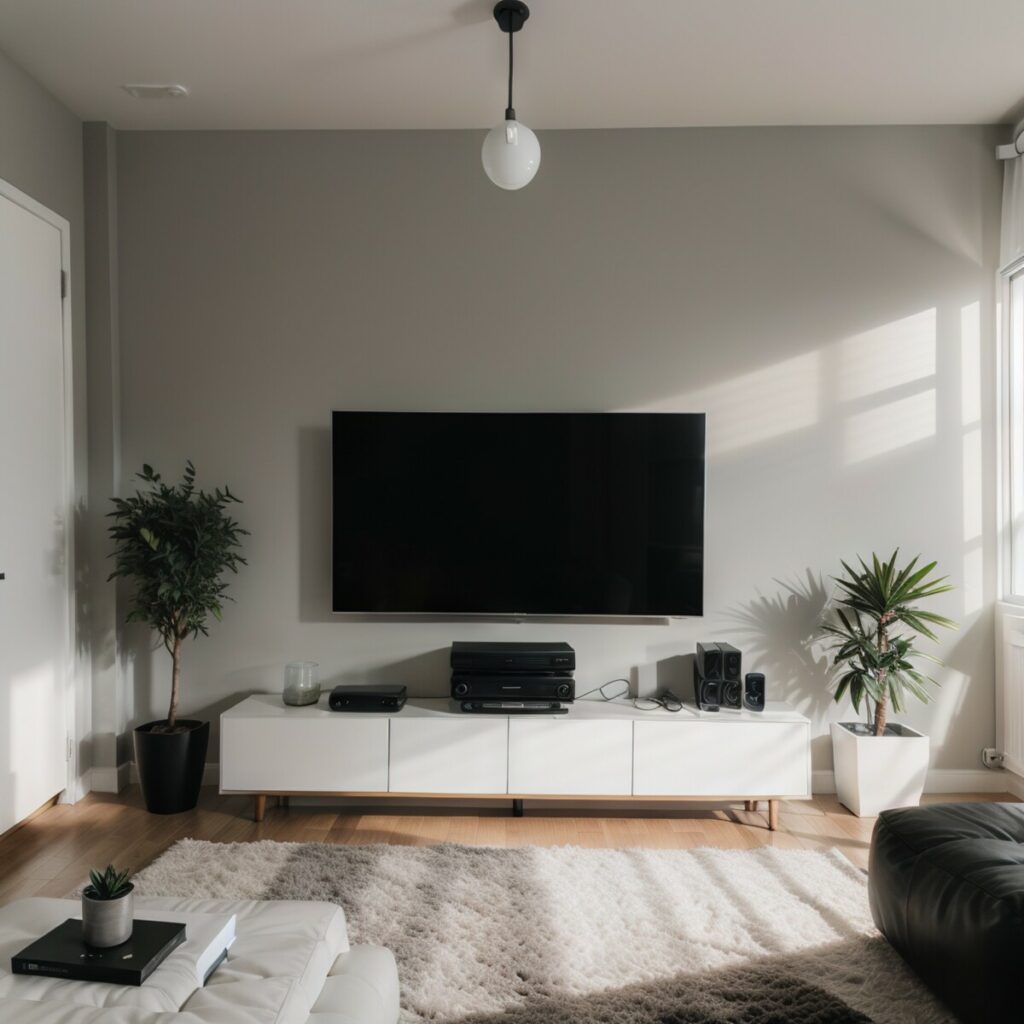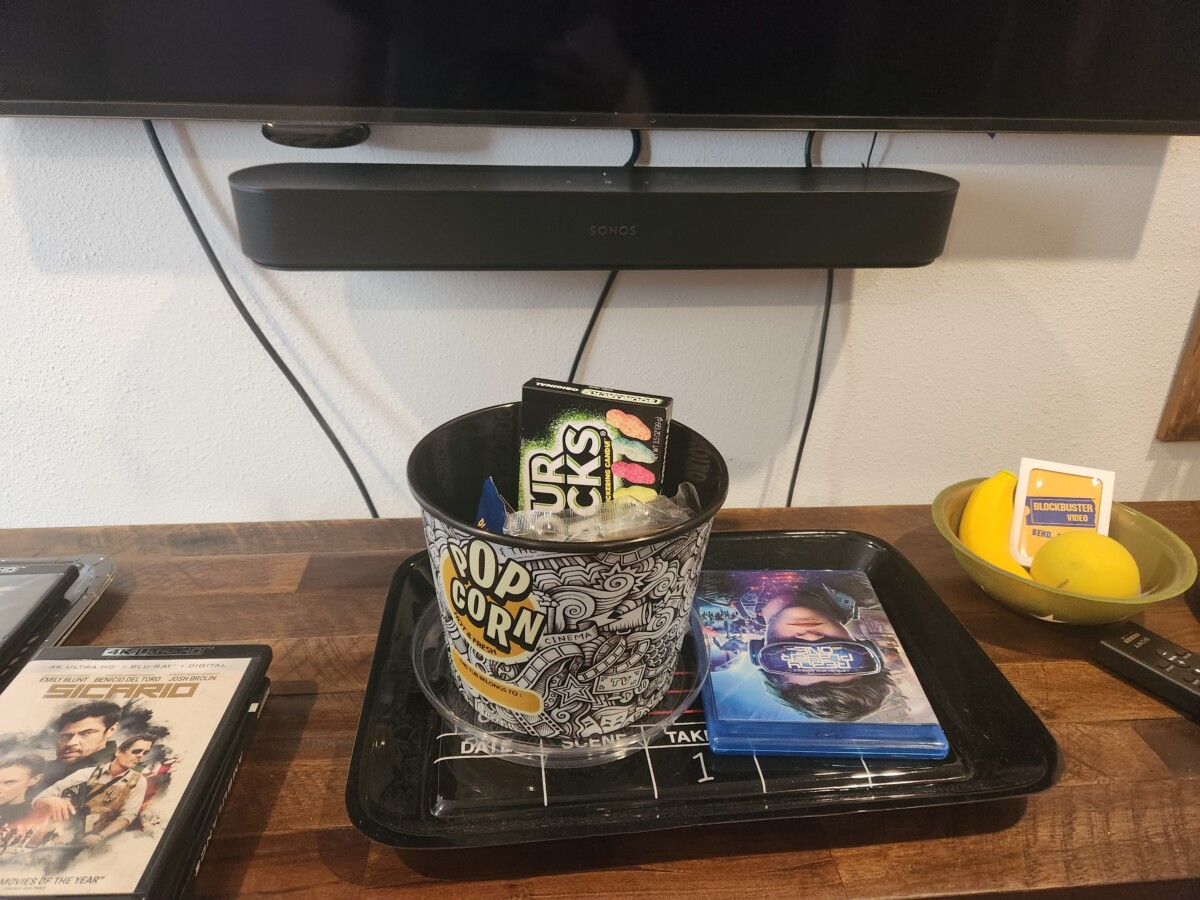As an Amazon Associate I earn from qualifying purchases
A common issue that many soundbar owners face is the unpleasant appearance of cables and wires that make for a complete eyesore in your living space.
To conceal soundbar wires and maintain a clean look, there are several solutions that you can implement without compromising on sound quality.
Whether you prefer not to modify your walls, or you’re looking for a more permanent fix, I assure you there are strategies that exist that can help you hide these wires.
Best Ways to Hide Soundbar Wires (Easiest)
Let’s explore popular solutions that look to hide soundbar wires. In this article, I choose to mainly focus on methods that do not require you to drill holes in the wall.
1. Cable Box
Cable Management Boxes: This is by far the easiest way to get rid of soundbar wires. A cable management box allows you to stow away excess wires and power strips, keeping everything hidden in the box.
Position the box behind furniture or in an inconspicuous spot to maintain a clean look in your entertainment area.
2. Wire Covers
There are two types of wire covers, cable raceways and cable channels.
Cable Raceways: These are excellent for organizing and concealing cables along walls.
They come with an adhesive backing or can be screwed in for a more permanent solution.
For example, you could run wires behind the wall, using cable raceways that blend with the surroundings to create an unobtrusive look.
Cable Channels: Much like raceways, cable channels offer a neat way to consolidate your wires into a single, more manageable bundle.
They can be painted to match your wall, providing a seamless and attractive concealment method.
3. Fabric Cable Sleeves
Fabric Cable Management Sleeves: Wrap your soundbar wires in fabric cable management sleeves to combine multiple cables into one tidy tube.
These sleeves offer flexibility and are available in various colors to complement your decor, making them both practical and decorative.
4. Cable Clips
Cord Clips and Small Hooks: Use cord clips or small hooks to route your soundbar cables neatly along the edges of furniture or walls.
This method keeps wires off the floor and prevents them from tangling, while still allowing for accessibility when needed.
5. Zip Ties
Cable Ties: Simple yet effective, zip ties help you gather all your soundbar wires together into a neat bundle.
Once the cables are secured, you can route them discreetly behind furniture or along baseboards, using hooks or clips to keep them in place and out of sight.
What Should You Choose to Hide Your Soundbar Wires?
Personally, I would probably use either a cable box or raceway as I find those to be the most aesthetically pleasing option.
However, it is going to depend on your living space and what you prefer.
How to Hide Wires for a Wall-Mounted Soundbar
When mounting your soundbar to the wall, the visibility of wires can be harder to hide. Here are some additional methods to keep those cords out of sight:
1. Behind the Wall: For a more permanent solution, you can run your soundbar cords behind the drywall. This might require cutting into your wall and should be done carefully to avoid damage to electrical wiring or insulation.
2. Baseboard Channels: If you prefer not to cut into the wall, consider installing baseboard channels. These discrete channels can hide your wires along the baseboard and are typically easier to install than in-wall options.
3. Adhesive Hooks: Smaller cables can be managed with adhesive hooks. Place these hooks behind furniture or along the back of the soundbar to keep cords organized and out of view.
4. Wall-Mounted Shelves: Position a shelf beneath your wall-mounted soundbar. Not only does this create additional space for decor or media devices but also provides a convenient hiding place for your cords.
Remember: Exercise caution when working with drywall and electrical wiring. Always consult with a professional if you’re unsure about the safety of your wire-hiding method.
Utilizing Home Decor/Furniture for Cable Concealment

You can strategically use home decor and furniture for effective cable concealment without compromising style.
Furniture Placement: Position your furniture to hide wires. For example, a console table, TV stand or a bookshelf beneath the soundbar can serve as a perfect hiding spot.
Route cables behind these items to keep them out of sight.
Decor Items: Utilize creative decor items like decorative boxes or plants.
Place these items in front of or around the soundbar setup to obscure any visible wires.
Cord Management Accessories: Furniture with built-in cord management solutions can be a stylish and functional addition.
Look for pieces that come with concealed channels or drawers specifically designed to run cables through them.
Remember, when using home decor and furniture for cable concealment, consider the flow of your room and the overall decor scheme.
Your objective is to incorporate the soundbar seamlessly while preserving the harmonious look of your living space.
Innovative Solutions for Cable Management
Here are three additional innovative solutions to not have soundbar wires exposed:
- Bluetooth Connectivity: Reduce the number of cables you need by utilizing Bluetooth technology. Connect your soundbar to devices wirelessly to eliminate the clutter of audio cables.
- Grommets and In-Wall Solutions: Drill grommets into furniture or opt for in-wall cable management to route your cables out of sight. This is more permanent but offers a clean, professional look.
- Creative Concealment:
- Decor Items: Position items such as plants or books to obscure any visible cables.
- Trim: Run cables along the trim of your room or behind baseboards. This helps blending them into the room’s architecture.
- Outlets Behind Furniture: Using a powered cable, you can place outlets behind furniture, hiding outlet cables and reducing wire distances.
Each option provides a different method of concealing cables to suit your preferences and the layout of your room.
The key is finding a balance between functionality, aesthetic, and the ease of changing your setup in the future.


